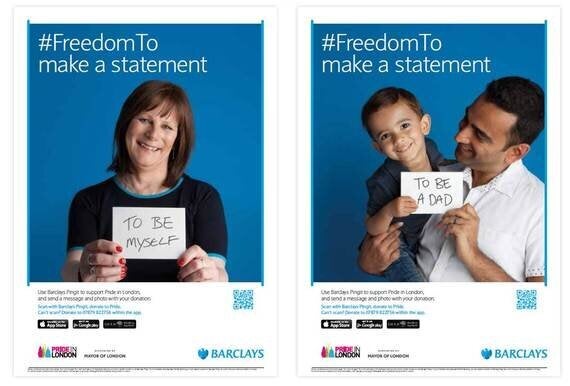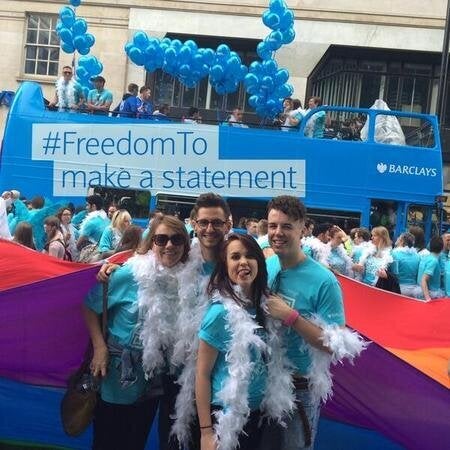Got your house in order?
As this year's pride season comes to a close it is hard not to have noticed the sheer volume of corporate activity that has been directed at LGBT communities all over the world by brands looking to ingratiate themselves with LGBT consumers.
In fact over the last two years featuring LGBT people in mainstream marketing has become so ubiquitous that brands could be seen as being conspicuous by their absence if they haven't already included a same sex couple in their mainstream marketing communications.
Equality is all the rage it would seem, and proudly nailing your colours to the rainbow coloured flagpole is now far less likely to upset the mainstream than it is to come out against marriage equality. In fact the small minority of heterosexuals brands might potentially offend by featuring LGBT inclusion in their advertising is arguably now less than the 6% of the adult population who are gay or lesbian that they could potentially gain as customers, plus their many family members, friends and workplace allies.
Marketing to LGBT people in many countries is now also likely to make the brand more appealing to a majority of their heterosexual customers.

Smart brands are facing forwards, and there's a rainbow looming right on the horizon.
While this activity is for the most part welcomed, there are some issues that companies should address before talking to this market if they are not be seen as exploitative, a label that can be hard to shake once it has been applied by the LGBT community. While LGBT inclusion and visibility is affirmative, jumping on the bandwagon if your own house is not in order can be a risky business.
At Out Now our number one piece of advice is always the same. If you want to demonstrate all important credibility with LGBT consumers then you have to ask yourselves how equally are your own LGBT staff treated? The second question is: are there skeletons in your closet regarding LGBT workers rights that are less than flattering?
We have came such a long way in a such a short period of time that it can be hard for companies to keep up with what is enticing and appealing for LGBT consumers. The bottom line is though, do I believe you? Because if one hasn't got faith in the message of support that a company is purportedly pushing, what hope will they have of becoming a loyal customer who thinks they are valued as an equal?
We face a future where the inclusion of LGBT people at work is not just optional, but is rather becoming essential. As former CEO of BP Lord Browne says in his new book The Glass Closet coming out at work is now simply good business.
This is where the line in the sand is now drawn. Full equality and respect at work is becoming the only acceptable standard if a company wants its communications to LGBT people to be taken seriously.
If this is not the case the results can be a damaging backlash, the worst response any advertiser can get to what they hope are heartfelt messages of support for potential LGBT customers, and our increasing number of allies.
Do you want credibility with that?

Two approaches which demonstrate these positions were seen during the Pride season in 2014.
The first, Burger King would appear to have done everything right, even if the rather drastic overuse of the rainbow colours showed a lack of creative flair. However the message written on the inside of the (rainbow coloured) burger wrapper that we are all the same inside certainly seemed genuine enough. A full review of the campaign can be read on the Gay Market News blog.
The problem comes when you look at Burger King's own employee policies a little closer, when a few cracks start to appear in their supposedly bona fide message. The Human Rights Campaign in the United States, which ranks companies based on the quality of their LGBT inclusion policies scores Burger King on the HRC index with just 55 out of a maximum score of 100. One of the reasons is that they offer no protections for staff related to gender identity - one Proud Whopper please, but don't expect any transgender rights with that.
This has led to much debate within the LGBT community as to whether the Proud Whopper is progress - or just exploitative commerce in action.
Take Pride in yourself
In contrast, Barclays bank's activities during Pride London not only managed to catch the right mood, but they were also built on the solid foundation of Barclays being ranked in the top six private sector employers on the Stonewall Equality Index in the UK, and scoring 100% by HRC in the USA.

As well as being a headline sponsor for the second year running, Barclays used a mix of promotional activities that were aligned with Pride London's own messaging, and so helped to include Barclays under the umbrella or Pride London from the outset rather than them being seen as a gatecrasher to the party.
To reinforce the message of their real commitment to their staff, one of Barclays' most visible activities was the Barclay's bus which lead the march, and was peopled by LGBT people and their straight supporters who were all staff of the bank. Using staff is a good strategy, especially when you have as good a track record of equal rights for your own LGBT workers as Barclays has. Barclays' own LGBT employee resource group Spectrum was started back in 2002, long before many financial institutions had their own support networks for their own LGBT staff, which demonstrates that when you talk the talk, and walk the walk, the pieces start to align themselves much more closely.
Perhaps some of the most encouraging outcomes from Barclays' Pride London approach though are from the comments that were made in the research that Out Now was commissioned to undertake both before and after the event, with both an LGBT and a mainstream group of respondents.
Some of the strongest responses from both mainstream and LGBT respondents were achieved by the high visibility inclusion of LGBT staff and their allies during the pride march. It was certainly seen as a strong and visible statement by the bank that LGBT people are welcome not only as customers, but as colleagues at work.
It certainly looks like there will be no let up in companies and big brand names continuing to increase their presence at Pride events all around the world in coming years.
However as the landscape for LGBT people in the workplace continues to change rapidly, so too will the activities that these companies engage in to reflect the inevitable acceptance into mainstream working environments that both LGBT and heterosexual people are coming to expect as standard.